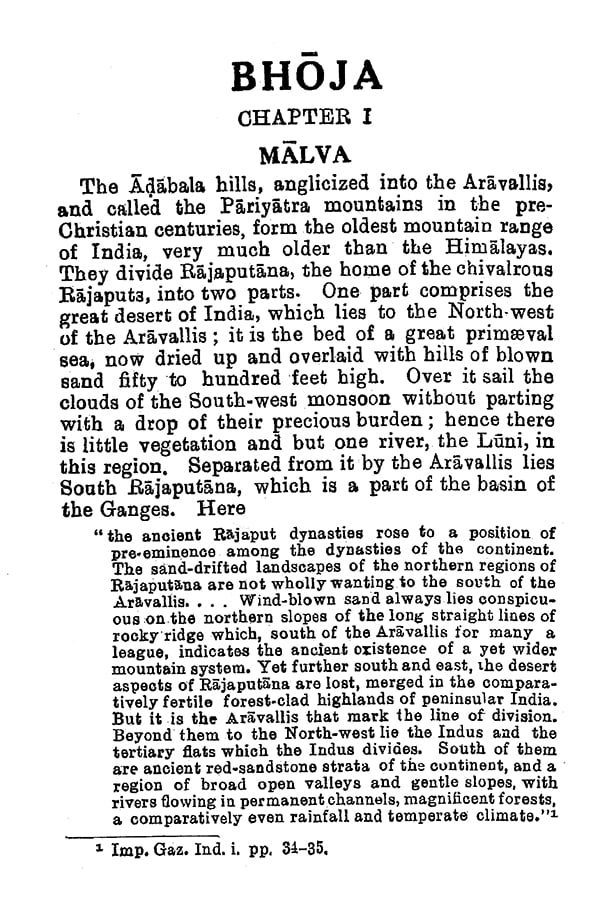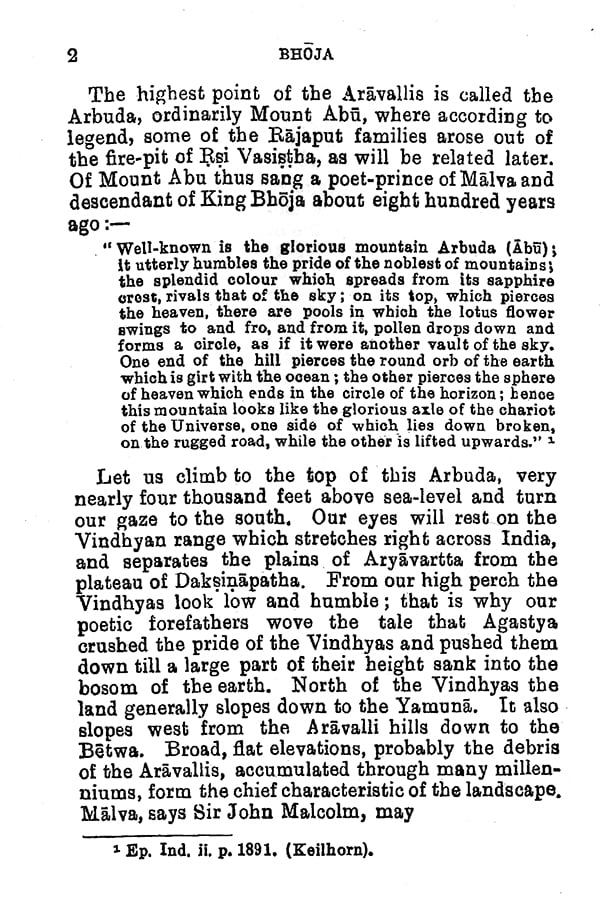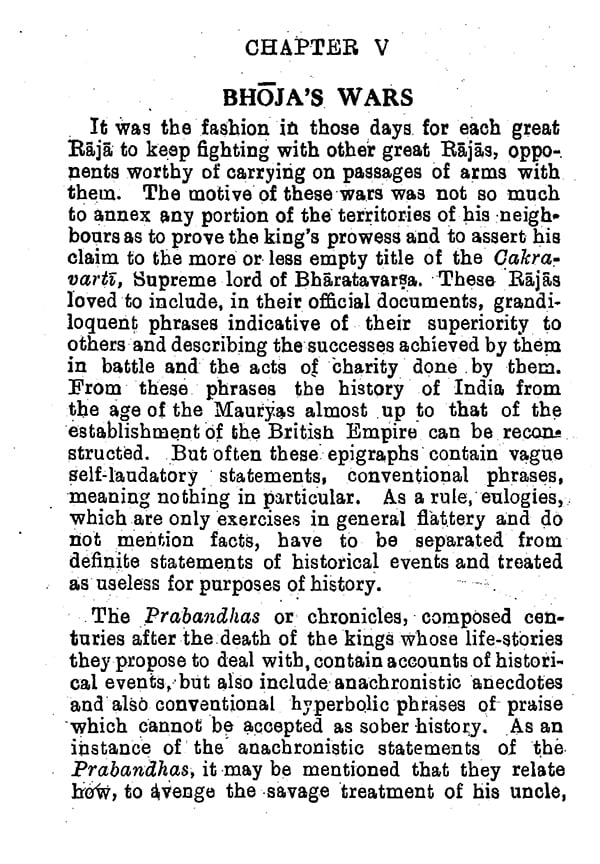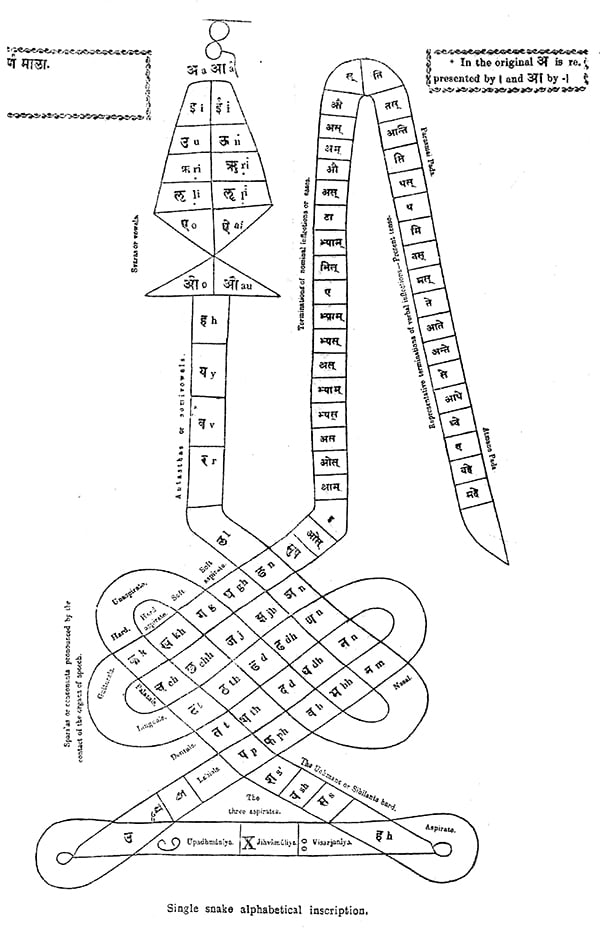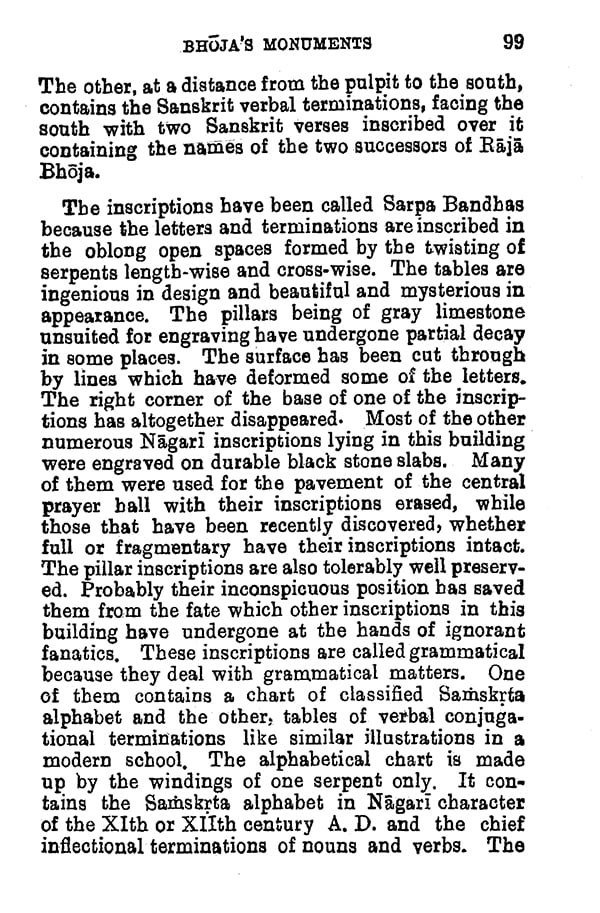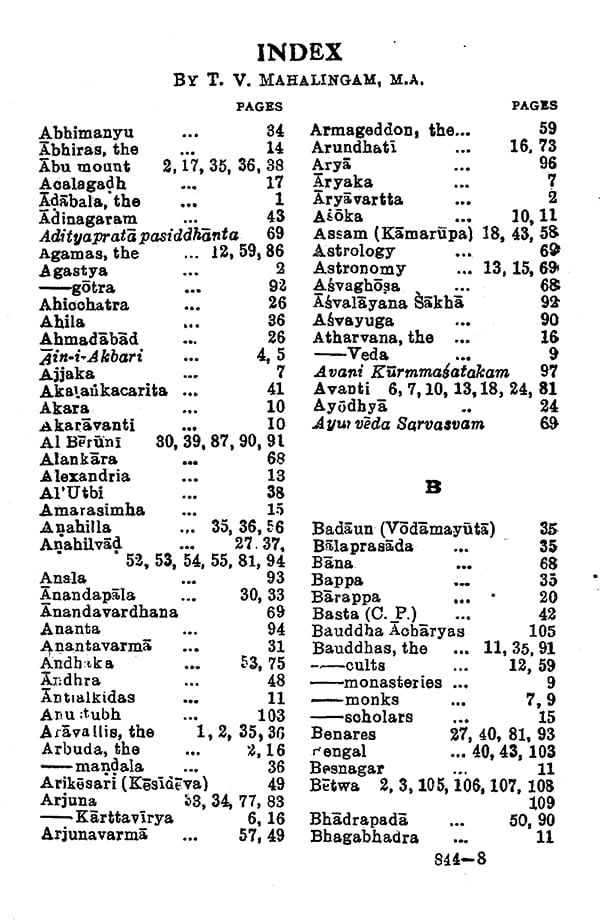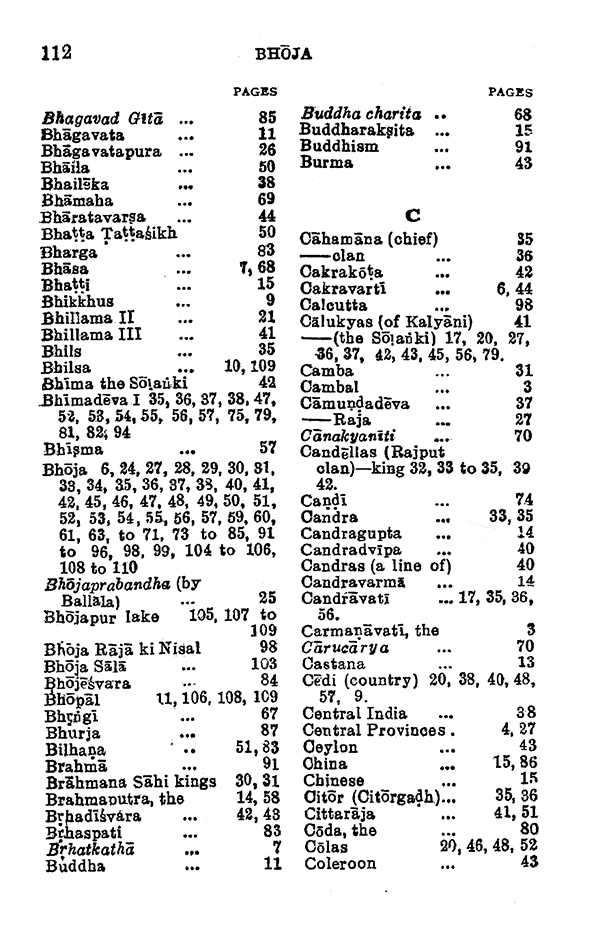
Bhoja Raja
Book Specification
| Item Code: | NAZ216 |
| Author: | P.T. Srinivasa Ayyangar |
| Publisher: | Manohar Publishers and Distributors |
| Language: | English |
| Edition: | 2020 |
| ISBN: | 9789390035304 |
| Pages: | 136 (8 B/W Illustrations) |
| Cover: | HARDCOVER |
| Other Details | 8.80 X 5.80 inch |
| Weight | 260 gm |
Book Description
This book provides a sketch of the life and times of Raja BhOja (1010-55), an Indian king from the Paramara dynasty. His kingdom was centred around the Malwa region in Central India and included parts of Gujarat, Rajasthan, Maharashtra and Madhya Pradesh. The book discusses early history of the Malwas, Raja BhOja the man, the scholar and the warrior. It also discusses the social and religious life during his time and also the monuments erected by him.
P.T. Srinivasa Ayyangar (1863-1931) was a historian, linguist and educationist. He wrote mainly on the history of South India.
This book was to have been only the first of a long series of historical studies which the late Professor P. T. Srinivas Ayyangar had contemplated for publication under the auspices of the Annamalai University. Un-fortunately it has proved also his last. Death has too soon snatched him away from us, and we are left with only one memorial to his association with this University.
Prof. P. T. Srinivas Ayyangar's versatile intellect, his rare powers of discrimination, the thoroughness of his method and his command of the English language are so well known in these parts of the country that it is needless for me to expatiate on them. I may how-ever be permitted to say that in this book we have a superb example of the kind of work we always associated with him. Inscriptions, tradition, literature have all been pressed into service, and the unique picture of Bhoja Raja of Dhgra; stands out in bold relief against a background of Eleventh Century India which he has succeeded in painting so graphically. I can only wish that Indian historians followed this method oftener than they do at present.
Prof. P. T. Srinivas,Ayyangar had asked me to go over the proofs of this book, and, being pressed for time, I bad excused myself to him. Is it not a curious coincidence, then, that I should at last be called upon to do something for this book which he would have very much liked me to do ?
**Contents and Sample Pages**
